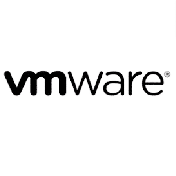Seminarinhalt
Programm
- Types and Examples of Cybersecurity Incidents
- Signs of an Incident
- Incident Prioritization
- Incident Response and Handling Steps
- Procedures and Preparation
IncidentResponse and Handling Steps
- How to Identify an Incident
- Handling Incidents Techniques
- Incident Response Team Services
- Defining the Relationship between Incident Response, Incident Handling, and Incident Management
- Incident Response Best Practices
- Incident Response Policy
- Incident Response Plan Checklist
- Incident Handling Preparation
- Incident Prevention
- Following the Containment Strategy to Stop Unauthorized Access
- Eradication and Recovery
- Detecting the Inappropriate Usage Incidents
- Multiple Component Incidents
- Containment Strategy to Stop Multiple Component Incidents
Windows Internals
- Introduction to Windows Internals
- Fooling Windows Task Manager
- Processes and threads
- PID and TID
- Information gathering from the running operating system
- Obtaining Volatile Data
- A deep dive to Autoruns
- Effective permissions auditing
- PowerShell get NTFS permissions
- Obtaining permissions information with AccessChck
- Unnecessary and malicious services
- Detecting unnecessary services with PowerShell
Handling Malicious Code Incidents
- Count of Malware Samples
- Virus, Worms, Trojans and Spywares
- Incident Handling Preparation
- Incident Prevention
- Detection of Malicious Code
- Containment Strategy
- Evidence Gathering and Handling
- Eradication and Recovery
Network Forensics and Monitoring
- Types and approaches to network monitoring
- Network evidence acquisition
- Network protocols andLogs
- LAB: Detecting Data Thievery
- LAB: Detecting WebShells
- Gathering data from network security appliances
- Detecting intrusion patterns and attack indicators
- Data correlation
- Hunting malware in network traffic
- Encoding and Encryption
- Denial-of-Service Incidents
- Distributed Denial-of-Service Attack
- Detecting DoS Attack
- Incident Handling Preparation for DoS
- DoS Response and Preventing Strategies
Securing Monitoring Operationsand Evidence Gathering
- Industry Best Practices
- Objectives of Forensics Analysis
- Role of Forensics Analysis in Incident Response
- Forensic Readiness And Business Continuity
- Types of Computer Forensics
- Computer Forensic Investigator
- Computer Forensics Process
- Collecting Electronic Evidence
- Challenging Aspects of Digital Evidence
- Forensics in the Information System Life Cycle
- Forensic Analysis Guidelines
- Forensics Analysis Tools
- Memory acquisition techniques
Memory:Dumping and Analysis
- Introduction to memory dumping and analysis
- Creating memory dump -Belkasoft RAM Capturer and DumpIt
- Utilizing Volatility to analyze Windows memory image
- Analyzing Stuxnet memory dump with Volatility
- Automatic memory analysis with Volatile
Memory: Indicators of compromise
- Yara rules language
- Malware detonation
- Introduction to reverse engineering
Disk: Storage Acquisition and Analysis
- Introduction to storage acquisition and analysis
- Drive Acquisition
- Mounting Forensic Disk Images
- Virtual disk images
- Signature vs. file carving
- Introduction to NTFS File System
- Windows File System Analysis
- Autopsy with other filesystems
- External device usage data extraction (USB usage etc.)
- Reviving the account usage
- Extracting data relate with the recent use of application, file etc.
- Recovering data after deleting partitions
- Extracting delete file and file related information
- Extracting data from file artifacts like $STANDARD_INFORMATION etc.
- Password recovery
- Extracting Windows Indexing Servicedata
- Deep-dive into Automatic Destinations
- Detailed analysis of Windows Prefetch
- Extracting information about program execution (UserAssist, RecentApps, Shimcache, appcompatcache etc.)
- Extracting information about browser usage (web browsing history, cache, cookies etc.)
- Communicator apps data extraction
- Extracting information about network activity
- Building timelines
Reporting –Digital Evidence
This module covers the restrictions and important details about digital evidence gathering. Moreover, a proper structure of digital evidence report will be introduced
Zielgruppen
- IT professionals
- Forensics and Incident Handling Specialists
- Security Consultants
- Enterprise Administrators
- Infrastructure Architects
- Security Professionals
- Systems Engineers
- Network Administrators
- other people responsible for implementing network and perimeter security
Vorkenntnisse
- To attend this training, you should have a good hands-on experience in administering Windows infrastructure
- At least 8 years in the field is recommended




Sehr umfangreich, viele Details, geht stark in die Tiefe! Top Trainerin! Viele Demos und Hands-On Übungen. Allerdings wird auch einiges an Vorwissen/Erfahrung vorausgesetzt. Insbesondere im Win/MS/AD.
System Forensics, Incident Handling and Threat Hunting (FOR)
12.09.2023Sehr umfangreich, viele Details, geht stark in die Tiefe! Top Trainerin! Viele Demos und Hands-On Übungen. Allerdings wird auch einiges an Vorwissen/Erfahrung vorausgesetzt. Insbesondere im Win/MS/AD.
— Daniel T.